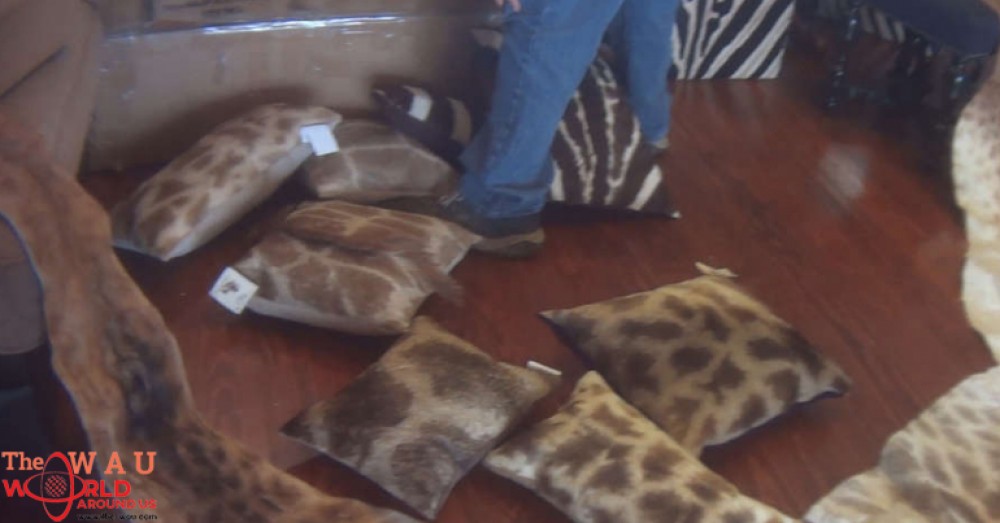Over the course of a decade, tens of thousands of giraffe parts were openly imported into the US, according to an investigative report released Thursday by the Humane Society of the United States and Humane Society International (HSI). That’s because bringing the world’s tallest animal through American borders is totally and completely legal.
Between 2006 and 2015, the US imported around 40,000 giraffe parts and products – mostly for commercial uses – representing around 4,000 individual giraffes. Although giraffe numbers have declined by about 40 percent in the last three decades, products made from giraffes, including Bibles and customized knives, were being sold by 51 dealers across the country legally.
Investigators wearing undercover cameras went into 21 stores in seven states. In a video recording produced by the team, a vendor is seen explaining how giraffes have to be killed because they are aggressive animals and put the lives and livelihoods of African villagers at risk. A few of the items they found include high-end items like a taxidermied giraffe fetching $8,000 and a custom-made giraffe jacket listed at $5,500, to lower-cost items such as a $10 tail-hair bracelet and $60 bone pistol grips.
Giraffes are listed as “vulnerable” by the International Union for Conservation of Nature (IUCN), following a 2016 study suggesting their numbers have dropped from 150,000 to around 100,000 since 1985. But giraffes aren’t considered endangered, which means they technically don’t receive protection from the federal government.
“Purchasing giraffe parts puts the entire species at risk. The giraffe is going quietly extinct. With the wild population at just under 100,000, there are now fewer than one third the number of giraffes in Africa than elephants,” said HSI president Kitty Block in a statement.
That’s why the organization is urging the United States Fish and Wildlife Service to list giraffes as an endangered species. If that became the case, it would place restrictions on imports, exports, and sales of giraffe parts and products, as has already been done for other endangered animals like rhinos.
According to the IUCN, giraffes are most at risk from habitat loss, civil unrest, and poaching. So how do giraffes make their way into the US? Well, it's mainly to do with trophy hunters. On average, roughly one giraffe is imported into the US by American trophy hunters every single day, a staggering number.
While supporters of trophy hunting often argue that the sport helps regulate wild animal populations, evidence for this is lacking. Meanwhile, corruption often means that money from trophy hunters doesn't actually end up going towards wildlife conservation, as it's supposed to. A 2017 study found that trophy hunting can quickly push vulnerable animals, such as lions and elephants, towards extinction. Therefore, restricting the movement of giraffe parts into the US, or ending trophy hunting altogether, could help prevent their demise.
Hundreds of dyed giraffe-bone knife handles for sale at a knifemaking supply company in Oklahoma. The HSUS
A full giraffe hide for sale in Florida. The HSUS
Share This Post












